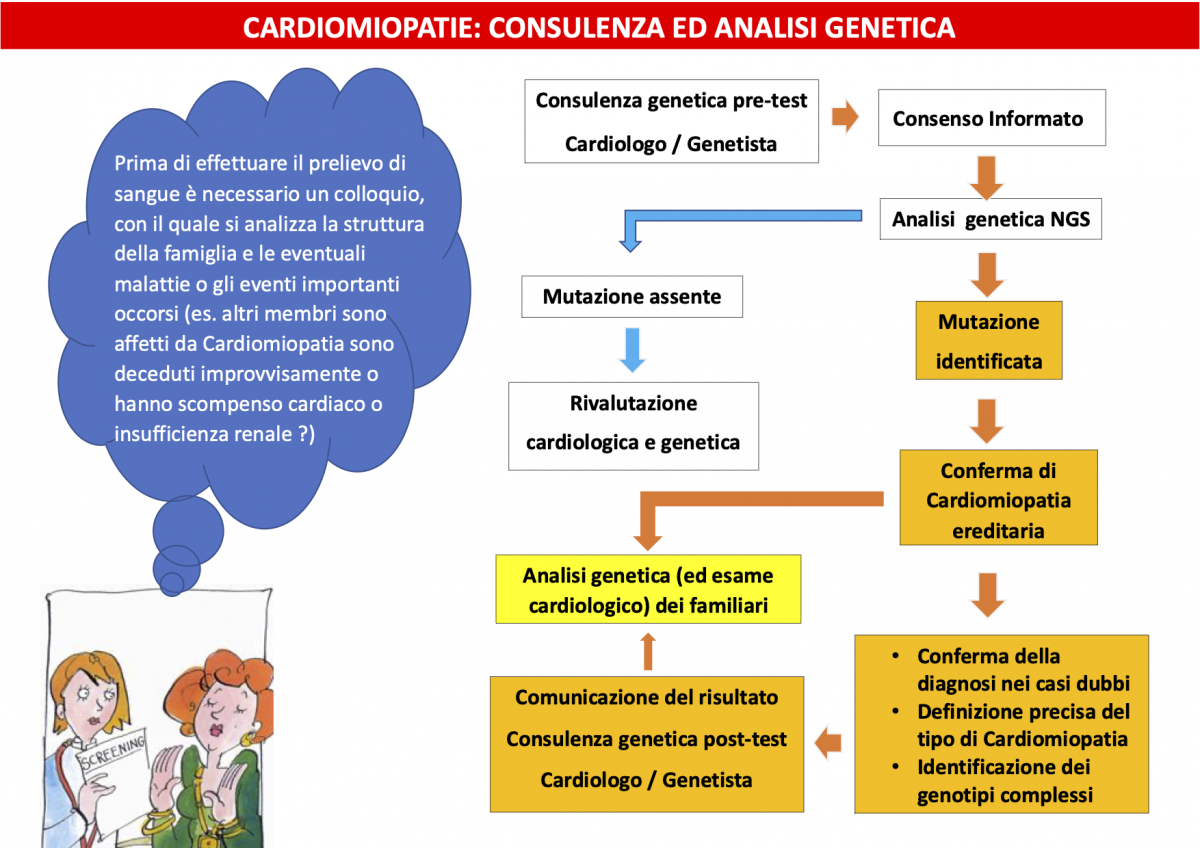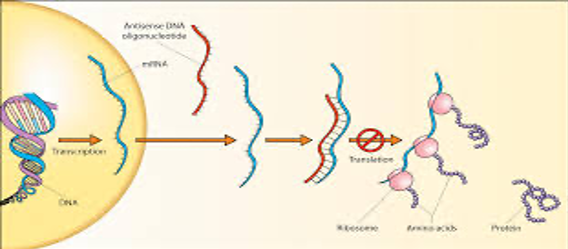Cardiomyopathies: genetic counseling and analysis

About the history: the structure of DNA was discovered in 1953, thanks to the studies of Rosalind Franklin, who was the first to imagine its helical structure. The images obtained were then used by Watson and Crick to prove their theory (1958), for which they won the Nobel Prize in 1962.
What is DNA, i.e. the genetic code? Every single cell of any living organism contains DNA, a very complex structure composed mainly of a double strand, coiled around itself to form a double helix. DNA contains the genetic code, formed by an alphabet of only 4 letters (ATGC), aligned in different sequences of 3 consecutive letters, i.e. triplets, called "codons", allow to produce 20 fundamental amino acids (e.g. Arginine, Lysine, Glycine, Alanine, etc). These amino acids, in turn, by binding together, produce all the proteins necessary for the functioning of our body.
A "gene” consists of a variable number of codons, which encode amino acids, which are used to produce different individual proteins such as, for example, "Myosin", "Troponin T. or I", "Myosin-binding protein C", essential proteins for contraction of heart cells, or "Desmoplakin" for cell-cell adhesion, or "Titin".
In XNUMX the genetic code of man was analyzed and over XNUMX genes have been identified.
Where is DNA? DNA is delicate and its integrity must be preserved. It is enclosed within the cell nucleus, where it replicates at each cell division in order to possibly keep the genetic information of that organism or individual intact. Unable to leave the nucleus, DNA needs an intermediary, called RNA, which copies the information encoded in the genes and transports it to the area of the cell around the nucleus called "cytoplasm”, where proteins are assembled and main activities of the cell itself take place.
Messenger RNA, a molecule similar to DNA, but with only one strand, copies the code from the corresponding DNA, and functions as a template for each specific codon. Each codon produces its own amino acid and the amino acid sequence forms a protein of precise length and spatial conformation to ensure the function it will have to perform.

What happens if the code is altered, or is incorrectly transcribed?
Various errors can occur, called "mutations" or "variants", which produce a protein, for example, missing some parts, such as a book that is missing a few pages. A malfunctioning protein can be responsible for diseases, and therefore also Cardiomyopathies, which can be recognized at birth, more often in adulthood. If the "mutations" are transmitted to children, these diseases are defined "hereditary”, as in most cases, for example, of Cardiomyopathies. However, mutations can also play a positive role. They contribute to the diversity of individuals, for example. in children or in a population, so as to ensure the variability of the species and the continuous adaptation to the changing environment.
Today we know thousands of "mutations" in numerous genes that cause cardiomyopathies, although several genes still remain to be identified.
The search for "mutations" in genes known so far is important to well evaluate the patient who has cardiomyopathy and his family members.
Genetic analysis (NGS - next generation sequencing)allows to identify one or more mutations(also called " variants") of the genetic code in one or more genes, responsible for the development of cardiomyopathy. For each type of cardiomyopathy, the most frequently encountered gene groups are analyzed.
For example, XNUMX genes are initially analyzed for patients with hypertrophic cardiomyopathy: MYBPCXNUMX, MYHXNUMX, TNNTXNUMX, TNNIXNUMX, TPMXNUMX, ACTCXNUMX, MYLXNUMX, MYLXNUMX, GLA, LAMP XNUMX, PRKAGXNUMX, TTR. If genetic mutations in these genes are not identified, a more in-depth analysis may be requested by the cardiologist with extension of the analysis to further gene groups.
In some laboratories, a greater number of genes are immediately analyzed (e.g. 45 or 174) and in some cases it is also possible to examine the whole set of genes (Exome).
Genetic analysis allows to :
- precisely identify the type of disease underlying Cardiomyopathy
- choose the most appropriate therapy
- carry out a more accurate assessment of the risk of evolution and complications in subsequent years, obviously together with other clinical and instrumental elements (for example: ECG, Echocardiogram, cardiac magnetic resonance, cardiorespiratory test, dynamic ECG)
- check if there is familial transmission of Cardiomyopathy, by looking for the mutation in family members as well
With current techniques the detection of a genetic variant is more frequent if one cardiomyopathy has already been diagnosed, through ECG and ECHO, also in other family members (the probability is about 60%, while it is lower if it has not been found in family members, about 30%).
Genetic testing must be preceded by a genetic consultation, made by the geneticist or an experienced cardiologist, as well as the interpretation of the written report..
THE FUTURE : One of the objectives of scientific research is the correction of genetic mutations, to be used in treatment of cancers and hereditary genetic diseases, including cardiomyopathies. However, genetic modification involves numerous ethical dilemmas and is still under study.
Main articles on genetics
Subscribe to AICARM NEWS
the AICARM APS Newsletter
Read our information on data processing Privacy Policy
